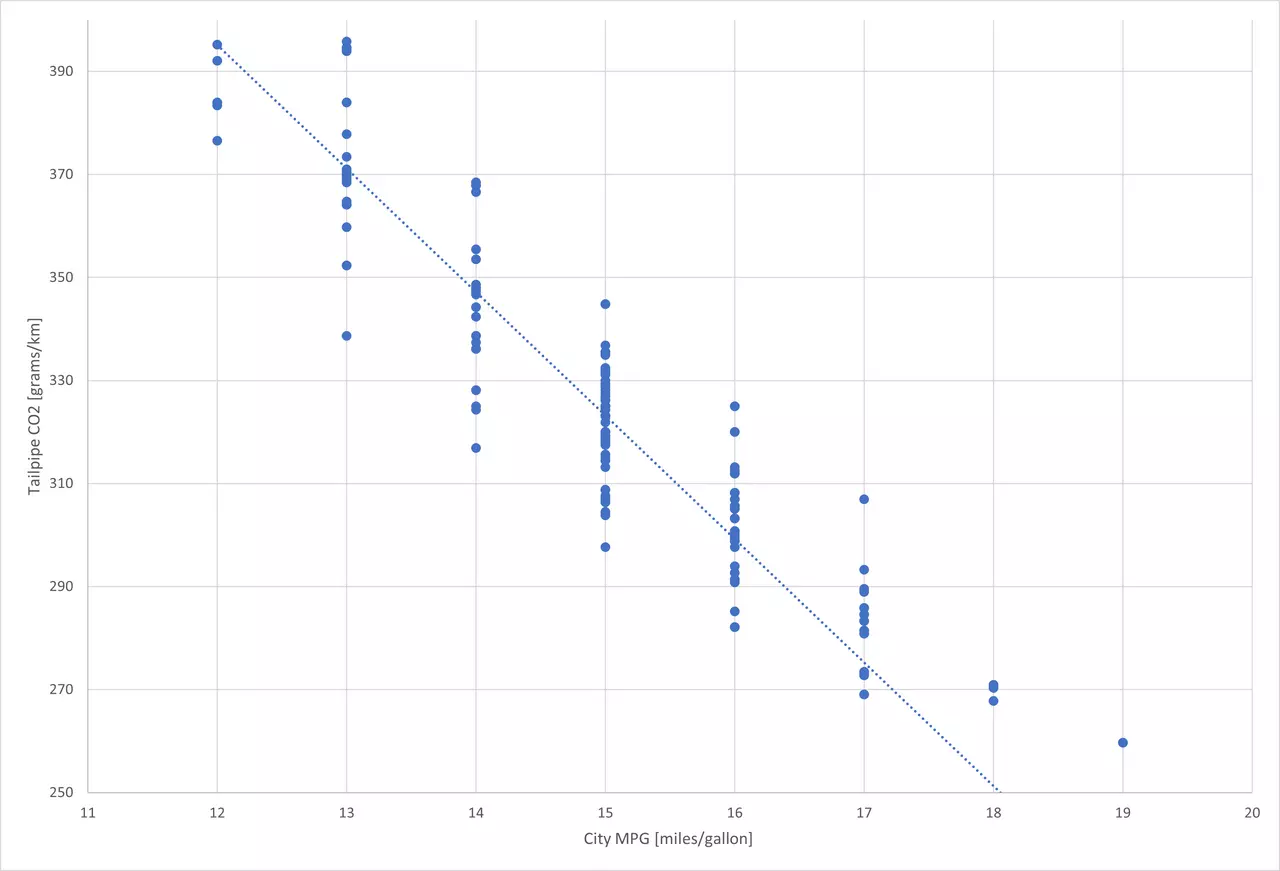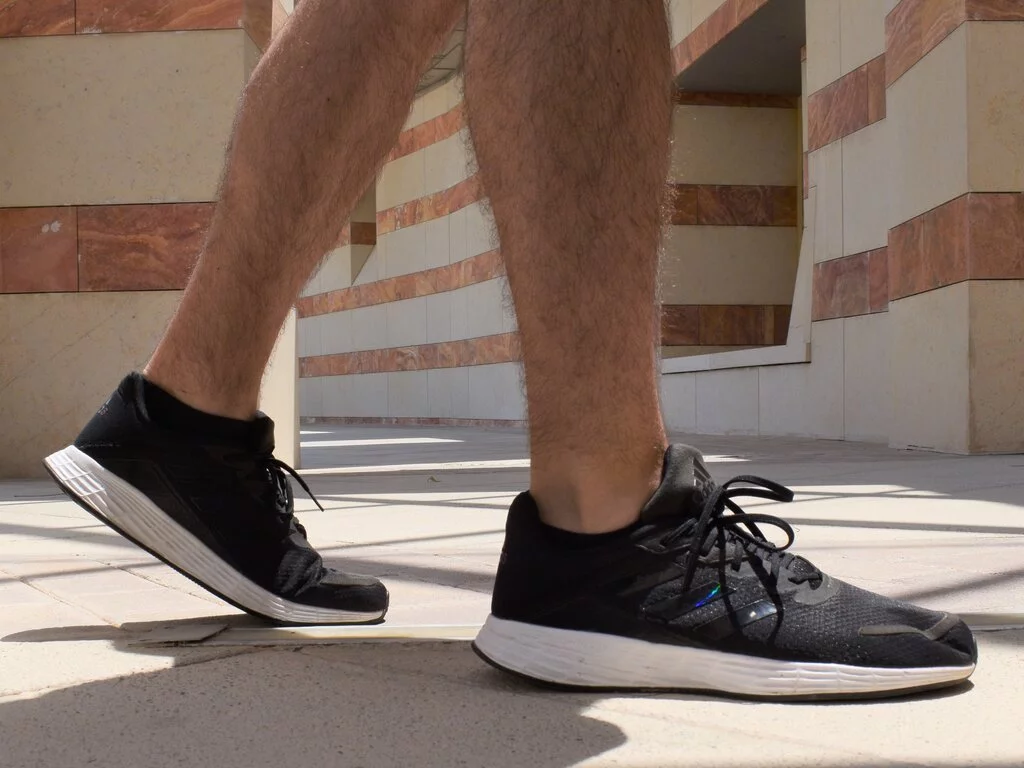It takes about 2250-2650 steps to burn 100 calories (kcal) on average. The exact number of steps depends on your gender, weight, speed, and age. The range mentioned is based on the average number of steps required for males (2250 steps) and females (2650 steps) of average weight walking at a moderate pace of 2.5 mph (4 km/h).
I have put together a table with the approximate number of steps required for males and females depending on their weight and pace below. Although these values are only an estimate, they give you a rough idea of how many steps it should take to burn 100 calories.
Men: (Scroll down for women)
| Weight | Walking speed | Steps |
|---|---|---|
| 50 kg (110 lb.) | 2.5 mph (4 km/h) | 3231 |
| 4 mph (6.4 km/h) | 3102 | |
| 4.5 mph (7.2 km/h) | 2493 | |
| 55 kg (121 lb.) | 2.5 mph (4 km/h) | 2938 |
| 4 mph (6.4 km/h) | 2820 | |
| 4.5 mph (7.2 km/h) | 2266 | |
| 60 kg (132 lb.) | 2.5 mph (4 km/h) | 2693 |
| 4 mph (6.4 km/h) | 2585 | |
| 4.5 mph (7.2 km/h) | 2077 | |
| 65 kg (143 lb.) | 2.5 mph (4 km/h) | 2486 |
| 4 mph (6.4 km/h) | 2386 | |
| 4.5 mph (7.2 km/h) | 1918 | |
| 70 kg (154 lb.) | 2.5 mph (4 km/h) | 2308 |
| 4 mph (6.4 km/h) | 2216 | |
| 4.5 mph (7.2 km/h) | 1781 | |
| 75 kg (165 lb.) | 2.5 mph (4 km/h) | 2154 |
| 4 mph (6.4 km/h) | 2068 | |
| 4.5 mph (7.2 km/h) | 1662 | |
| 80 kg (176 lb.) | 2.5 mph (4 km/h) | 2020 |
| 4 mph (6.4 km/h) | 1939 | |
| 4.5 mph (7.2 km/h) | 1558 | |
| 85 kg (187 lb.) | 2.5 mph (4 km/h) | 1901 |
| 4 mph (6.4 km/h) | 1825 | |
| 4.5 mph (7.2 km/h) | 1466 | |
| 90 kg (198 lb.) | 2.5 mph (4 km/h) | 1795 |
| 4 mph (6.4 km/h) | 1723 | |
| 4.5 mph (7.2 km/h) | 1385 | |
| 95 kg (209 lb.) | 2.5 mph (4 km/h) | 1701 |
| 4 mph (6.4 km/h) | 1633 | |
| 4.5 mph (7.2 km/h) | 1312 | |
| 100 kg (220 lb.) | 2.5 mph (4 km/h) | 1616 |
| 4 mph (6.4 km/h) | 1551 | |
| 4.5 mph (7.2 km/h) | 1246 |
Women: (Scroll up for men)
| Weight | Walking speed | Steps |
|---|---|---|
| 50 kg (110 lb.) | 2.5 mph (4 km/h) | 3870 |
| 4 mph (6.4 km/h) | 3715 | |
| 4.5 mph (7.2 km/h) | 2985 | |
| 55 kg (121 lb.) | 2.5 mph (4 km/h) | 3518 |
| 4 mph (6.4 km/h) | 3378 | |
| 4.5 mph (7.2 km/h) | 2714 | |
| 60 kg (132 lb.) | 2.5 mph (4 km/h) | 3225 |
| 4 mph (6.4 km/h) | 3096 | |
| 4.5 mph (7.2 km/h) | 2488 | |
| 65 kg (143 lb.) | 2.5 mph (4 km/h) | 2977 |
| 4 mph (6.4 km/h) | 2858 | |
| 4.5 mph (7.2 km/h) | 2297 | |
| 70 kg (154 lb.) | 2.5 mph (4 km/h) | 2764 |
| 4 mph (6.4 km/h) | 2654 | |
| 4.5 mph (7.2 km/h) | 2132 | |
| 75 kg (165 lb.) | 2.5 mph (4 km/h) | 2580 |
| 4 mph (6.4 km/h) | 2477 | |
| 4.5 mph (7.2 km/h) | 1990 | |
| 80 kg (176 lb.) | 2.5 mph (4 km/h) | 2419 |
| 4 mph (6.4 km/h) | 2322 | |
| 4.5 mph (7.2 km/h) | 1866 | |
| 85 kg (187 lb.) | 2.5 mph (4 km/h) | 2277 |
| 4 mph (6.4 km/h) | 2185 | |
| 4.5 mph (7.2 km/h) | 1756 | |
| 90 kg (198 lb.) | 2.5 mph (4 km/h) | 2150 |
| 4 mph (6.4 km/h) | 2064 | |
| 4.5 mph (7.2 km/h) | 1659 | |
| 95 kg (209 lb.) | 2.5 mph (4 km/h) | 2037 |
| 4 mph (6.4 km/h) | 1955 | |
| 4.5 mph (7.2 km/h) | 1571 | |
| 100 kg (220 lb.) | 2.5 mph (4 km/h) | 1935 |
| 4 mph (6.4 km/h) | 1858 | |
| 4.5 mph (7.2 km/h) | 1493 |
How were these values calculated?
The MET (metabolic equivalent of tasks) of walking at different speeds (Source) was used to calculate the calorie consumption per minute for a range of body weights.
Energy consumption (kcal) per minute = MET × Body Weight (kg) × 0.0175
The average walking speeds and number of steps per kilometer (1265 for males, 1515 for females) were used to calculate the number of steps it takes to burn 100 calories (kcal).
You may have noticed that going faster reduces the number of steps required to burn a set number of calories. It is simply because running burns more calories than walking in a set amount of time. This time then translates to shorter distances and fewer steps. You can use a simple pedometer to count the number of steps you take.
A similar effect can be noticed for body weights. People who weigh more need fewer steps to burn 100 calories because it takes more energy to move their bodies.
How do you measure walking pace?
Walking pace can be measured by dividing the distance walked by the time it took.
Pace = Distance / Time
For example, if you walk 2 miles in 30 minutes, your pace is 2 miles / 0.5 hours = 4 mph. Similarly, walking 3 kilometers in 30 minutes means your pace is 3 km / 0.5 hours = 6 km/h.
You may be asking: “What is my walking pace?“. I have provided a list of walking paces for common distances and times in both miles and kilometers below.
Walking pace for distances in miles: (Scroll down for km)
| Distance (miles) | Time (minutes) | Pace (mph) |
|---|---|---|
| 1 | 10 | 6.0 |
| 15 | 4.0 | |
| 20 | 3.0 | |
| 25 | 2.4 | |
| 30 | 2.0 | |
| 2 | 20 | 6.0 |
| 25 | 4.8 | |
| 30 | 4.0 | |
| 40 | 3.0 | |
| 45 | 2.7 | |
| 50 | 2.4 | |
| 60 | 2.0 | |
| 3 | 30 | 6.0 |
| 35 | 5.1 | |
| 40 | 4.5 | |
| 50 | 3.6 | |
| 60 | 3.0 | |
| 70 | 2.6 | |
| 80 | 2.3 | |
| 90 | 2.0 | |
| 4 | 40 | 6.0 |
| 50 | 4.8 | |
| 60 | 4.0 | |
| 70 | 3.4 | |
| 80 | 3.0 | |
| 90 | 2.7 | |
| 5 | 50 | 6.0 |
| 60 | 5.0 | |
| 70 | 4.3 | |
| 80 | 3.8 | |
| 90 | 3.3 | |
| 100 | 3.0 |
Walking pace for distances in kilometers: (Scroll up for miles)
| Distance (km) | Time (minutes) | Pace (km/h) |
|---|---|---|
| 1 | 8 | 7.5 |
| 10 | 6.0 | |
| 12 | 5.0 | |
| 15 | 4.0 | |
| 20 | 3.0 | |
| 2 | 16 | 7.5 |
| 20 | 6.0 | |
| 24 | 5.0 | |
| 30 | 4.0 | |
| 40 | 3.0 | |
| 3 | 24 | 7.5 |
| 30 | 6.0 | |
| 36 | 5.0 | |
| 45 | 4.0 | |
| 60 | 3.0 | |
| 4 | 32 | 7.5 |
| 40 | 6.0 | |
| 48 | 5.0 | |
| 60 | 4.0 | |
| 80 | 3.0 | |
| 5 | 40 | 7.5 |
| 50 | 6.0 | |
| 60 | 5.0 | |
| 75 | 4.0 | |
| 100 | 3.0 | |
| 6 | 48 | 7.50 |
| 60 | 6.00 | |
| 72 | 5.00 | |
| 90 | 4.00 | |
| 120 | 3.00 |
How can you burn 100 calories?
There are many different ways to burn 100 calories. For example, running at 10 mph (16 km/h) burns twice as many calories as walking at 4 mph (6.4 km/h). I present a summary of the time it takes an average person to burn 100 calories in the table below.
Time (in minutes) it takes to burn 100 calories (kcal):
| Exercise | 50 kg (110 lb.) | 60 kg (132 lb.) | 70 kg (154 lb.) | 80 kg (176 lb.) | 90 kg (198 lb.) | 100 kg (220 lb.) |
|---|---|---|---|---|---|---|
| Jogging | 16.3 | 13.6 | 11.7 | 10.2 | 9.1 | 8.2 |
| Running, 6 mph | 11.7 | 9.7 | 8.3 | 7.3 | 6.5 | 5.8 |
| Running, 7 mph | 10.4 | 8.7 | 7.4 | 6.5 | 5.8 | 5.2 |
| Running, 8 mph | 9.7 | 8.1 | 6.9 | 6.1 | 5.4 | 4.8 |
| Running, 9 mph | 8.9 | 7.4 | 6.4 | 5.6 | 5.0 | 4.5 |
| Running, 10 mph | 7.9 | 6.6 | 5.6 | 4.9 | 4.4 | 3.9 |
| Bicycling | 15.2 | 12.7 | 10.9 | 9.5 | 8.5 | 7.6 |
| Dancing | 15.7 | 13.0 | 11.2 | 9.8 | 8.7 | 7.8 |
| Basketball | 17.6 | 14.7 | 12.6 | 11.0 | 9.8 | 8.8 |
| Boxing | 8.9 | 7.4 | 6.4 | 5.6 | 5.0 | 4.5 |
| Football | 14.3 | 11.9 | 10.2 | 8.9 | 7.9 | 7.1 |
| Rope Jumping | 9.7 | 8.1 | 6.9 | 6.1 | 5.4 | 4.8 |
| Soccer | 16.3 | 13.6 | 11.7 | 10.2 | 9.1 | 8.2 |
| Volleyball | 28.6 | 23.8 | 20.4 | 17.9 | 15.9 | 14.3 |
| Tennis | 15.7 | 13.0 | 11.2 | 9.8 | 8.7 | 7.8 |
The energy expenditure for each exercise is calculated using the general MET for that exercise and the corresponding body weight (Source).
How is walking good for the environment?
Walking is good for the environment because it is better than all the alternatives. If we compare walking to driving, we find that it reduces carbon emissions. Similarly, walking is more sustainable than cycling over short distances if we count the energy used to manufacture bicycles.
It is important to keep in mind that every situation is different though. If you already have a bicycle, it may be more sustainable to use it. Walking in that case can be considered a waste of available resources.
Another important factor is distance. Walking is fine if your school or work are close to your home. If it takes you too long though, it might be better to consider cycling or public transportation. These options can save time while still reducing emissions compared to using cars.
Why is walking better than running?
Walking can be better than running for many reasons although both are great ways to get fit and burn calories.
Walking causes fewer injuries than running. In fact, it causes fewer injuries than any other type of exercise or sport. Walkers were found to suffer from less muscle soreness than joggers even though the effects on endurance and body fat were similar (Source). Muscle soreness is often associated with injuries since it is seen as a warning sign or indicator of an early-stage injury.
Walking can also be more comfortable and sustainable than running. A lot of people find it difficult to maintain a running pace for more than a few minutes especially if they are beginners. By choosing to walk for longer durations, they can burn more calories than running and slowly improve their stamina. It is also a more sustainable sport because people tend to avoid activities that make them uncomfortable. They are more likely to go outside for a walk again if it wasn’t that bad before.
Walking is also more accessible because you don’t get as sweaty and don’t have to bring special running shoes. All you have to do is get outside and start. This makes it easier to incorporate a walking session into your daily schedule. Running, on the other hand, requires preparation before and a shower after.
Finally, walking is a more sociable and relaxing exercise than running or jogging. You can go out for a walk with a friend and maintain a conversation, unlike jogging which makes it a lot harder to breathe. Research has also shown that walking in a natural setting reduces stress and improves mood (Source). It is definitely a lot easier to relax and enjoy nature when you’re going at a slower pace.
Why is walking better than driving?
Walking is better than driving for environmental, financial, and health reasons.
When considering the environment, walking eliminates car emissions, noise pollution, and the demand for new vehicles. An average car has a carbon footprint of 165g CO2 eq. per km (Source). Cars also add to man-made noise pollution which negatively affects human health and behavior. Finally, the demand for manufacturing vehicles is reduced when enough people choose to walk. This also reduces emissions and the demand for finite resources such as petroleum and plastic.
It is also better to walk short distances if you want to save money on gasoline. Another option would be to save money by choosing not to purchase a car. This is more suitable in places where public transportation is available and owning a car is not a must.
Walking is also better for your health. Research has repeatedly shown that moderate exercise greatly improves cardiovascular health. The NHS (UK National Health Service) recommends 150 minutes of moderate-intensity activities every week (Source). This is equivalent to 30 minutes of walking every weekday. You will also lose weight while commuting which cannot be said for driving or going on a bus. Walking has also been shown to promote better bone health and increase life expectancy.
How does driving less help the environment?
By choosing to drive less, you are effectively reducing your carbon footprint. Your carbon footprint is the total mass of carbon emissions resulting from your daily activities. A large part of that footprint comes from daily transport if you drive to work or school.

When you choose to take a public transport method, you reduce that carbon footprint by sharing the emissions with many people. If you decide to use a bicycle or walk, you eliminate carbon emissions from your daily transport.
How much emissions do cars produce?
Cars produce about 251 grams of CO2 per km (404 grams of CO2 per mile) on average (Source). This value varies a lot depending on the size and model of the car.
For example, a sub-compact car like the hybrid 2021 BMW i3 only emits about 14 grams of CO2 per km (22 grams per mile). A compact car similar to a 2021 Toyota Corolla releases 156-178 gCO2/km (251-286 gCO2/mile). The 2021 Chevrolet Malibu 2.0L, considered a midsize car, has emissions of 213 gCO2/km (342 gCO2/mile), and the 2021 4WD GMC Sierra, a standard pickup truck, produces 248-349 gCO2/km (464-561 gCO2/mile). This data can be downloaded from the EPA website.
Since the mass of released gases depends directly on the mass of fuel combusted, emissions can be estimated from the fuel efficiency or mpg (miles per gallon) of the car. This means that a car with a higher mpg would produce fewer emissions. A simple graph of tailpipe CO2 emissions per km vs. city mpg shows this relationship clearly. I extracted the data for all 2021 cars and created the graph below. It is clear that there’s a range of CO2 emissions per km for each car mileage. The emissions also decrease with higher mileage as seen from the decreasing trendline.

How much do cars contribute to global warming?
According to the IEA, the transport sector was responsible for 24% of all global direct CO2 emissions in 2020 (Source), and road vehicles including cars account for 75% of these emissions. Therefore, cars contribute to about a fifth (18%) of all direct carbon emissions. In the US, transportation accounts for 35% of total CO2 emissions (Source).
Greenhouse gases that contribute to global warming include carbon dioxide (CO2), methane (CH4), nitrous oxide (N2O), and fluorinated gases. However, CO2 has consistently had the largest effect on global warming. Currently, CO2 emissions from fossil fuel, industrial processes, forestry, and other land uses constitute more than 75% of global greenhouse gas emissions (Source). Therefore, cars and other land vehicles contribute to about 14% of global warming.
Although the average fuel consumption of new cars continues to decrease, it is not enough to keep us on track with the sustainable development goals. The IEA recommends that stricter CO2 standards be enforced on cars and campaigns for more rapid adoption of electric vehicles (Source).

